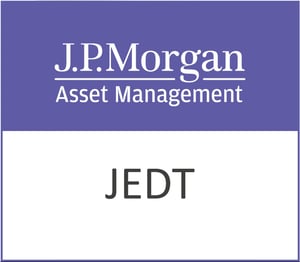A subtle shift is underway where underserved economies are quietly lining up to rewrite the rules of transaction finance. Beneath the familiar cadence of mobile notifications and e-commerce apps lies a gathering momentum, one that hinges on local behaviour as much as it does on cutting-edge infrastructure. Investors scanning for the next inflection point would do well to look beyond traditional corridors, where nascent networks and innovative partnerships are beginning to chart a markedly different course.
From Lagos to Jakarta, the convergence of smartphone proliferation and regulatory openness is creating a fertile ground for digital payments to thrive. In many markets, plastic cards never took hold, leaving a vacuum that nimble tech providers are now filling with mobile wallets and QR-code solutions. Yet what differentiates this wave is the orchestration of capital into real-world assets, from smallholder loans to renewable energy projects, that underpins these payment platforms. Far from being siloed fintech experiments, they are integrated into the fabric of local commerce and infrastructure financing.
Take for instance the way a leading wallet service in Southeast Asia is tapping digital data streams to extend microloans to vendors at a fraction of the cost of traditional lenders. By harnessing transaction histories in near real-time, they mitigate credit risk and price loans dynamically, creating a feedback loop that rewards prudent financial behaviour. The result is not only higher adoption rates but also a reservoir of creditworthiness data that institutional creditors can draw on when deploying larger pools of capital into sectors like agriculture and clean energy.
Similarly, in parts of sub-Saharan Africa, remittance corridors are being redefined. Instead of the legacy chain of agents and forex bureaus, blockchain-enabled platforms now allow diaspora communities to send money home instantly and at minimal cost. The inflows land directly in recipients’ mobile wallets, enabling them to pay school fees or purchase inputs with unprecedented ease. This seamless experience is drawing in users who previously shunned formal banking, creating a multiplier effect as merchants adapt by accepting digital payments for a broader range of goods and services.
Crucially, these payment ecosystems are knitting together with infrastructure financing vehicles. Impact investors and development finance institutions are increasingly syndicating with local fintechs, directing funds into renewable energy installations, climate-smart agriculture and affordable housing. By linking loan repayment streams to digital payment rails, they ensure greater transparency and precision in cash flows. This hybrid model addresses two perennial emerging‐market challenges: the scarcity of reliable credit data and the opacity of project cash flows.
Regulators, initially cautious about ceding control of national payments systems, are now embracing open-loop frameworks. Through regulatory sandboxes and tiered KYC regimes, authorities balance financial integrity with inclusion goals. In India and Brazil, for example, central banks have rolled out instant payment networks that allow any licensed provider to plug in, provided they comply with data localisation and consumer protection norms. This modular architecture accelerates product launches and fosters competition, reducing the cost of digital transactions to levels that make mass adoption viable.
The scaling dynamics in these markets also differ from those in mature economies. Rather than the wholesale migration of legacy bank customers, growth is driven by first-time entrants, predominantly women and younger cohorts, who leapfrog traditional credit hierarchies. They gravitate towards user experiences that blend social media-style interfaces with financial services, incentivised by cashback rewards and peer referrals. As these cohorts age into higher income brackets, their digital habits become entrenched, creating long-term revenue streams for payment providers and ancillary service partners.
From an investor standpoint, the opportunity lies at the intersection of payment volume and real-asset financing. Annual transaction value in key emerging hubs is projected to double over the next half-decade, fuelled not merely by e-commerce but by integration with essential services—utilities, healthcare and public transport all moving online. Each digital payment event generates data that can be monetised for underwriting loans, dynamic risk pricing and targeted product offerings. The potential to cross-sell insurance, savings products or even subscriptions to digital marketplaces multiplies the lifetime value of each user.
However, the path is not without hazards. Currency volatility, political shifts and uneven infrastructure can introduce friction. Investors must assess counterparties’ ability to navigate local regulatory landscapes and forge alliances with banks, telcos and government bodies. Success hinges on partnerships that blend global capital with local know-how, aligning incentives across stakeholders to deliver both financial returns and developmental impact.
In this unfolding narrative, the most compelling stories may emerge not from headline-grabbing unicorns but from the steady innovators fine-tuning their models to local conditions. They are the ones forging distribution networks across fragmented jurisdictions, designing credit products for largely untapped segments and embedding green finance into everyday transactions. For investors with a patient horizon and an appetite for complex ecosystems, these ventures offer a route to participate in a durable transformation of how money moves, and how capital backs the real economy, in some of the world’s fastest-changing markets.
Fidelity Emerging Markets Limited (LON:FEML) is an investment trust that aims to achieve long-term capital growth from an actively managed portfolio made up primarily of securities and financial instruments providing exposure to emerging markets companies, both listed and unlisted.










































